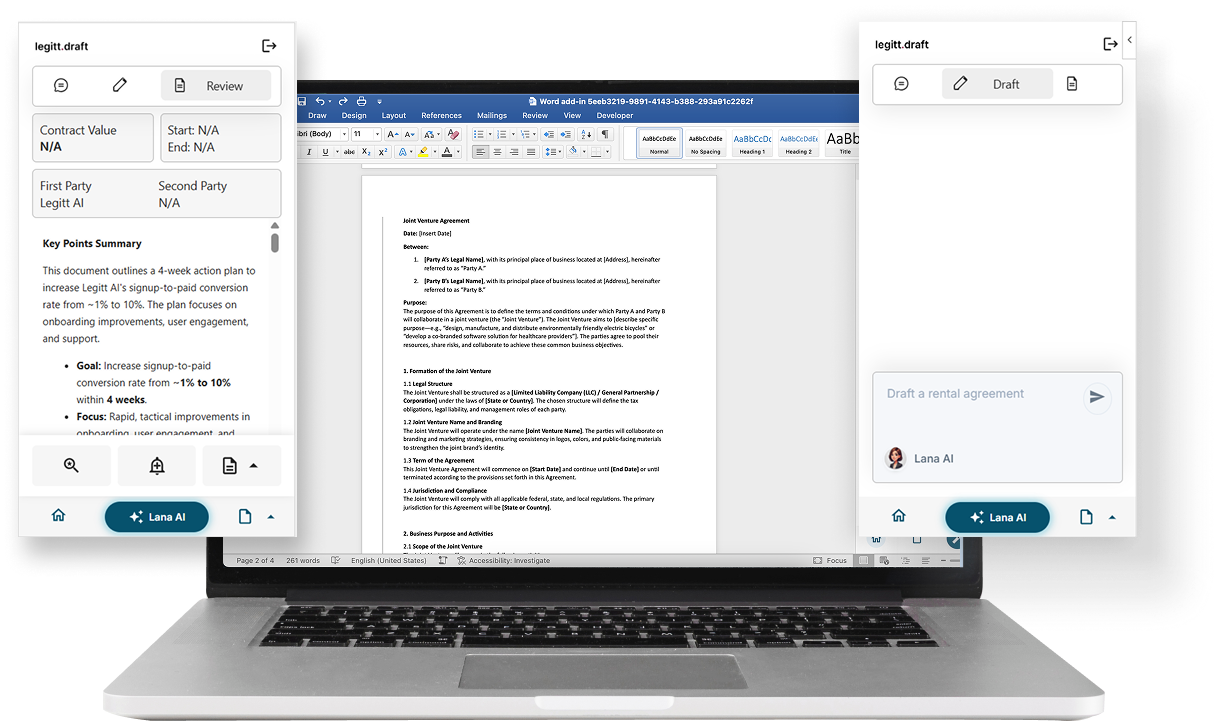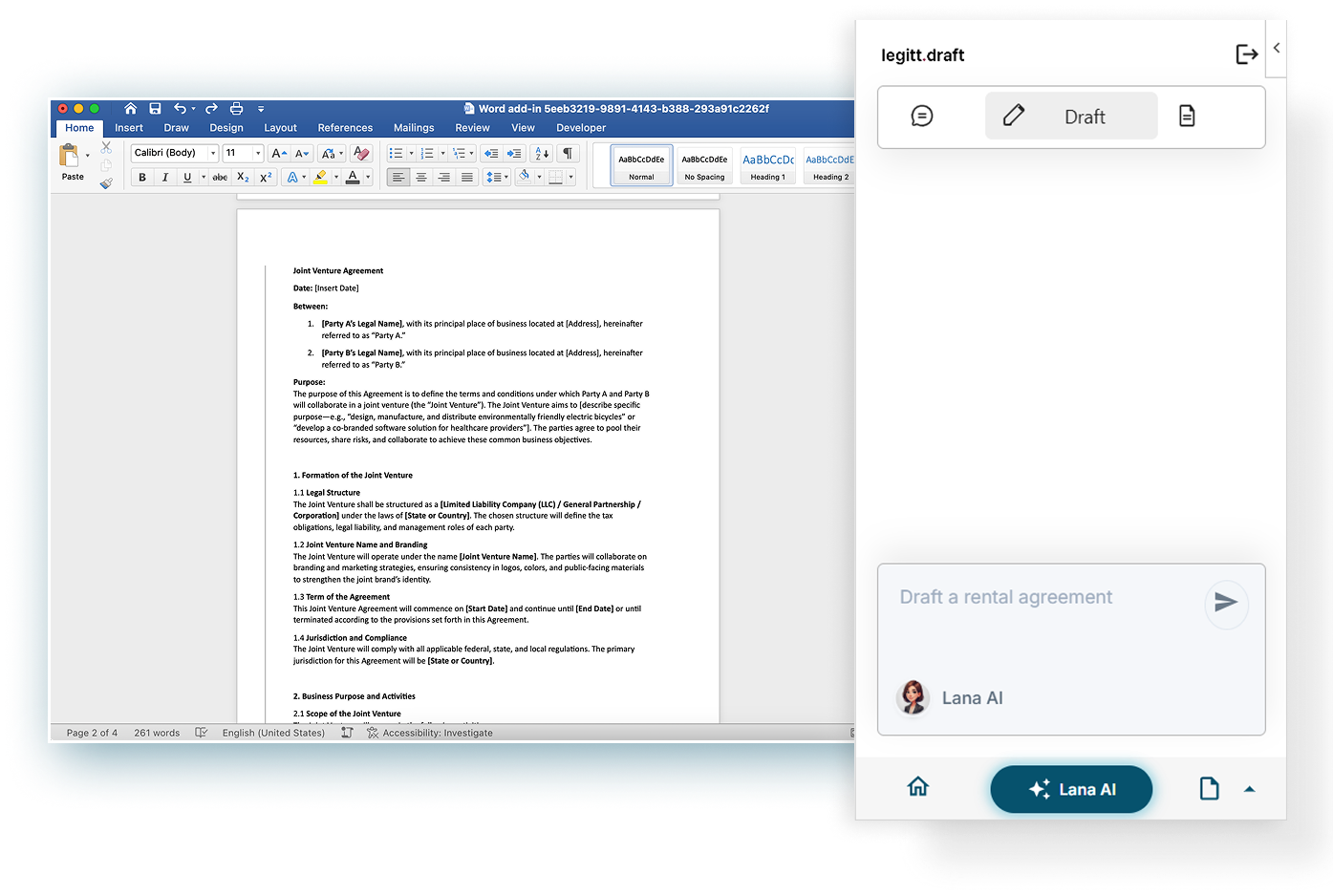Contracts are the foundation of business relationships. They govern partnerships, secure payments, outline responsibilities, and reduce legal risk. Yet, for decades, companies have relied on manual drafting – copying past agreements, editing Word documents line-by-line, emailing back and forth for approvals, and hoping nothing gets missed.
In today’s world of automation, AI, and instant collaboration, manual contract drafting isn’t just outdated – it’s risky, slow, and expensive. Here are five compelling reasons why you should stop drafting contracts manually and embrace AI-powered, intelligent contract tools instead.
1. Manual Drafting Is Time-Consuming and Error-Prone
Manually drafting contracts can take hours – even days – especially when dealing with complex agreements involving multiple stakeholders. You spend time:
- Searching for a previous contract
- Copy-pasting and editing terms
- Replacing names and dates
- Checking clause consistency
- Reviewing for legal and business alignment
Every step introduces the risk of human error. Missed dates, misnamed parties, outdated clauses – all can lead to legal disputes or costly amendments down the line.
Modern AI tools like Legitt Draft eliminate this by suggesting the right clauses, auto-filling party information, and flagging inconsistent language in real-time. What once took 8 hours now takes 20 minutes – with fewer mistakes and better results.
2. Legal Teams Are Overburdened With Repetitive Work
Legal professionals should focus on high-value tasks – risk analysis, deal structuring, compliance strategy – not repeatedly rewriting NDAs or redlining the same indemnity clause. But manual processes trap them in low-impact work, becoming bottlenecks in the business flow.
Manual drafting often results in legal teams being looped in for every new agreement, slowing down operations and delaying deals. Sales, procurement, and HR teams are left waiting.
AI-powered contract tools enable self-service – non-legal teams can generate legally compliant contracts on their own, using pre-approved templates and clause libraries. Legal still maintains oversight, but without being the bottleneck. Everyone wins.
3. Inconsistent Language Puts Your Company at Risk
When different teams draft contracts manually, they often pull from past agreements, freelance edits, or Google searches. The result? Inconsistent terminology, missing clauses, or terms that don’t align with your company’s current policies or risk appetite.
Even small variations in clause language – especially in areas like termination, indemnification, or liability – can have huge implications in the event of a dispute.
With a centralized AI contract assistant, all contracts are aligned to your latest legal standards. Every clause recommendation is consistent. No outdated boilerplates. No rogue legal phrasing. You stay protected.
Click to see how we speed up your legal process.
Learn More
4. Negotiations Become Slower and More Difficult
In a manual setup, each redline must be reviewed by legal, discussed via email, updated in Word, and versioned. Miscommunication is common. It’s difficult to track who made which change and why. Multiple versions float across inboxes, often leading to version conflicts.
This slows down deal velocity and frustrates everyone involved.
Modern contract tools streamline negotiations with smart redlining, clause deviation tracking, and comment threads directly within the document. AI even suggests fallback language when a counterparty rejects a clause, making negotiation faster and more strategic.
You negotiate smarter – not harder.
5. You Miss Out on Data and Intelligence
Manually drafted contracts are static documents. They sit in folders or drives with no structured data. You can’t easily search for trends, track clause performance, or identify which terms increase risk or delay negotiations.
Without structured insights, you’re flying blind.
Modern contract solutions convert contracts into structured data. They allow you to extract metadata like renewal dates, payment terms, governing law, and more – giving legal, sales, and finance teams the visibility they need.
AI can surface patterns: Which clauses most often get negotiated? Which customers take the longest to sign? What’s the risk exposure across your vendor base?
You gain visibility – and make better decisions.
Draft & Review Contracts 10x Faster – With Zero Hassle
Donload Now
Bonus: You Future-Proof Your Contracting Process
The world is moving fast. Remote work, global teams, shorter deal cycles, increasing compliance – they demand smarter contracting. Sticking to manual drafting in 2025 is like using fax machines in the age of Slack.
AI-native platforms like Legitt Draft bring drafting, review, negotiation, and insights into one seamless experience – right inside Microsoft Word. It’s how modern teams close faster, stay compliant, and scale effortlessly.
Conclusion: It’s Time to Move On
Manual contract drafting had its moment. But that moment has passed.
The cost of slow, risky, and inconsistent contracting is too high – especially when AI-powered tools now offer speed, consistency, compliance, and intelligence with minimal setup.
By moving away from manual drafting, you unlock a world where:
- Sales reps close deals in hours, not weeks
- Legal teams operate as strategic enablers, not gatekeepers
- Contracts become searchable, analyzable, and insightful assets
- Your business moves faster – and safer
Legitt Draft is leading this change – embedding contract intelligence directly into Microsoft Word. So the next time you open Word to draft a contract, ask yourself:
Why am I doing this manually… when there’s a smarter way?
Did you find this article worthwhile? More engaging blogs and products about smart contracts on the blockchain, contract management software, and electronic signatures can be found in the Legitt AI. You may also contact Legitt to hire the best contract lifecycle management services and solutions, along with free contract templates.
FAQs on Drafting Contracts
Why should I stop drafting contracts manually if I’m already used to it?
Manual drafting may feel familiar, but it’s inefficient and error-prone. Today’s AI tools can do repetitive work faster and more accurately, allowing you to focus on strategic thinking, negotiation, and higher-value work.
Aren’t contract tools expensive to implement?
Modern contract tools like Legitt Draft are affordable, especially when compared to the cost of legal errors, delays, or external counsel fees. They save hundreds of hours and reduce risk, delivering a clear ROI within weeks.
Is AI accurate enough for legal work?
AI doesn’t replace lawyers - it assists them. Legitt Draft, for example, draws from pre-approved clause libraries and learns from your company’s practices. It ensures consistency and flags risky deviations, making your contracts safer, not sloppier.
What kind of contracts can benefit from automation?
Virtually all contracts - NDAs, MSAs, employment agreements, vendor contracts, and partnership deals - benefit from automation. Templates, clause suggestions, and review assistance work across all industries and contract types.
How does AI help during contract negotiation?
AI tracks redlines, flags deviations from standard clauses, and even suggests fallback language for rejected terms. It also highlights negotiation patterns over time, helping your team become more strategic and efficient in future deals.
Will I lose control over the contract language?
No. You remain in control. AI tools like Legitt Draft only suggest clauses based on your approved content. You can accept, reject, or modify any recommendation - and legal teams still set the standards and rules.
How do I ensure compliance when using AI tools?
By centralizing templates and clause libraries, AI tools actually improve compliance. Instead of teams using outdated or inconsistent language, everyone works from the same legal source of truth — directly inside their workflow.
Can non-legal teams draft contracts safely with these tools?
Yes, that’s one of the biggest benefits. Sales, HR, or procurement teams can generate contracts using pre-approved templates and AI guidance, without needing to involve legal for every document. This boosts speed and reduces backlog.
What happens to my old contracts if I switch to AI tools?
Your legacy contracts can be uploaded and structured into the system, allowing you to extract key data and align future contracts to your current standards. Many tools also offer contract summarization and clause analysis for existing documents.
How do I get started with a tool like Legitt Draft?
You can install Legitt Draft from Microsoft AppSource or through Legitt’s website. After a quick setup, you can import your clauses, configure your templates, and start drafting smarter - all without leaving Microsoft Word.
